The Man Behind the Curtain: Doctor Who's Fifth Series (Part Three)
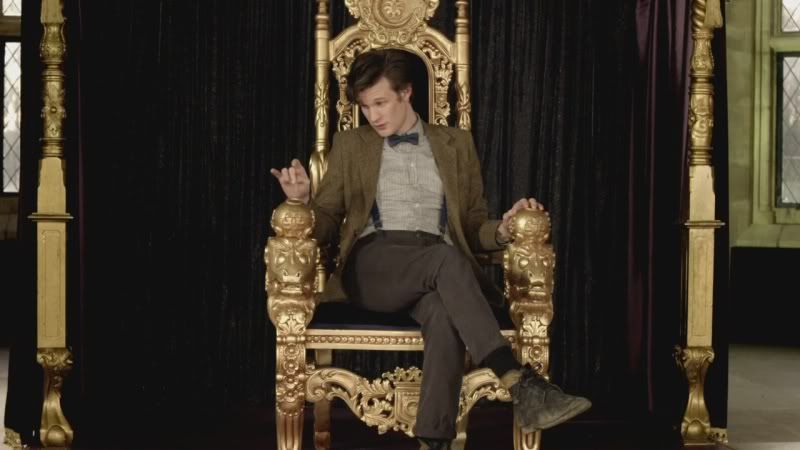
The Man Behind the Curtain
Revisiting Doctor Who's Series Five: Part Three
An Addendum
(Vampires of Venice and Amy's Choice)
"Qui veut faire l'ange fait la bête"
("Who wants to play the angel make of themselves the beast.")
--Blaise Pascal

The next two episodes of the fifth series concern the dynamics of the three characters (the Doctor, Rory, and Amy) and how their identities fit within the fairy tale archetypes. The Doctor, realizing his role as the fairy godmother, the old wise man, the teacher/guide, grabs Rory and pulls him into the TARDIS so that he and Amy may realize their roles as the fairy tale prince and princess. Throughout the two episodes, the Doctor often seems to be standing between them, but is attempting to move aside. The problem is that Amy is clinging to him as a sort of father figure, as part of her childhood and need for adventure, and even as a need to escape from growing up and marriage (and, in a very real sense, Rory).
"You know what's dangerous about you? It's not that you make people take risks, it's that you make them want to impress you. You make so they don't want to let you down. You have no idea how dangerous you make people to themselves when you're around."
These next few episodes greatly concern Rory. In the beginning, he symbolizes reality and growing up. He knows exactly who the Doctor is: the call to adventure, the guide through Time, the danger to the safety of reality and being settled. The Doctor makes people grow up and change. In many respects, Rory doesn't want what the Doctor has to offer. Rory is different. He's not the child dazzled, like Amy. Instead, he's a bit too much the adult, coldly understanding it all with practicality. He sets himself against the adventure and magic in these couple of episodes, but he will come to embrace it and his new identity as Amy's prince/knight, being more in touch with his inner child, while she will grow up.
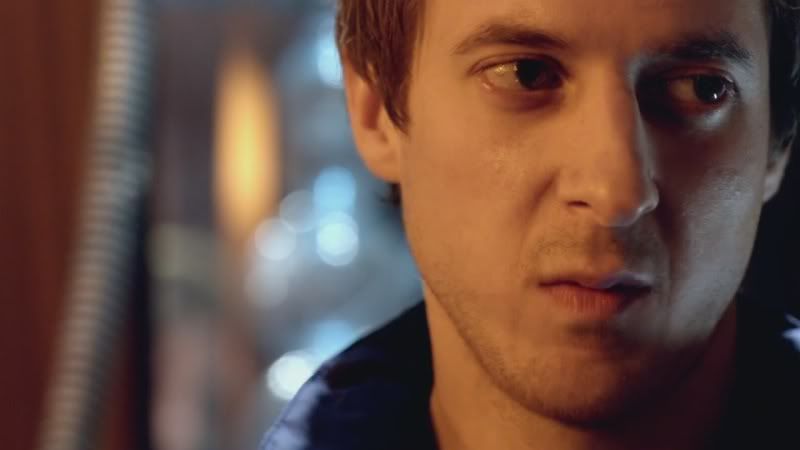
Rory has already grown up, but this is not necessarily a good thing. It causes friction between him and Amy. Amy who has not grown up yet and still desperately needs the adventure into discovering her own identity. Amy and Rory are in danger of destroying each other's identity. The only way to solve this dilemma is for Rory to become the prince to Amy's princess, for Rory to become a romantic hero equal to her. The Doctor literally spells this out to Rory, explaining that if he had gone through the adventure they had, Amy would have kissed him. And this is exactly what happens at the end of Vampires in Venice.
"The life out there, it dazzles, it blinds you to the things that are important."
"One minute it's you make people a danger to themselves and the next it's we're not leaving you, but if you people get squashed, or blown up or eaten, who--"
Vampires of Venice is a transition episode for the characters. Amy is trying to sort out her relationship to her "boys", understanding them in terms of archetypes ("brother", "father", "fiancé"). At first she sees Rory as a killjoy to her adventure, but eventually, she identifies him as part of her identity (wanting him to stay in the TARDIS). We are still asking "Who are you?" to the Doctor, wondering what his role is, but it is becoming clearer and clearer that he is the facilitator in adventure, not a romantic participant.
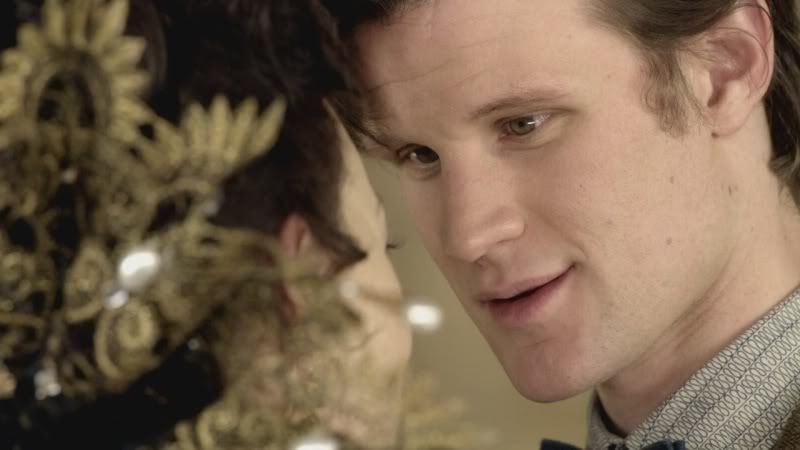
"Waiting for mum to make them some compatible girlfriends.
Ew. I've been around a lot, but ew."
The action of Vampires of Venice concerns a mother trying to save her species by making brides for her thousands of sons. Ironically, this is exactly what the Doctor is doing for Amy. He is being the matchmaker, reminding both she and Rory of what is most important in the adventure. Parents and children play a subtle but poignant motif throughout the series, reflecting Amy's continued abandonment, and also the Doctor's role in her life.
By the end of Vampires of Venice, Rory has moved from being the Doctor's foil to being a member of TEAM TARDIS. Though the Doctor is the main character of the show, he is not really the romantic, fairy tale hero. That position really belongs to both Amy and Rory. The Doctor is the guiding old man.

Amy's Choice, though, magnificently flips this dynamic on its head. Though we don't know it until the very end, the episode is all about the Doctor, the man behind the curtain, the fairy godmother, the old wise man, the trickster, the guiding teacher, the matchmaker, the manipulator of Time and Dream, of both reality and fantasy. And, really, it is about the dark side of that role, the beast within, and it is physically manifested in the Dream Lord.
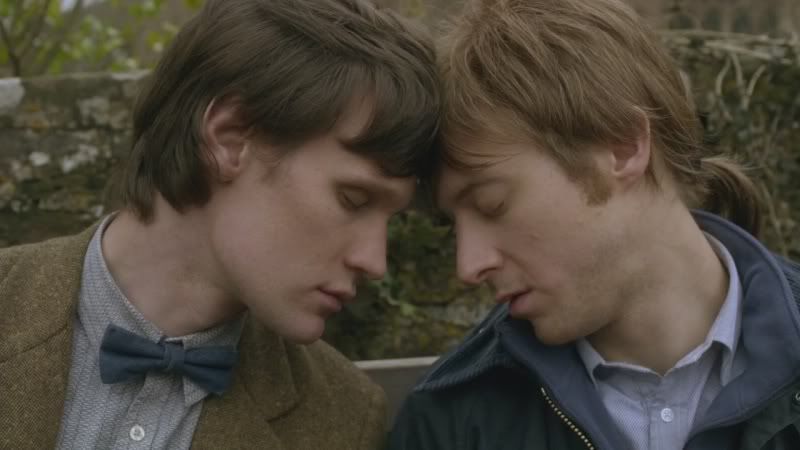
Again, we have duality all over the place. There are two doctors: Rory and the Doctor, and each one seems to stand for one of the two worlds, each competing as Amy's "boys". Furthermore, there are two worlds, one with a broken time machine and one a village that time forgot, both trapped in Time and therefore unable to change or grow. Therefore, there are two of each character. The fact that the Doctor is unchanged in both worlds (with the exception of the colors of his suspenders and bow tie) should alert us to the fact that his second self is the Dream Lord himself.

The Dream Lord is the beast, the dark side within the Doctor, and yet, only with this side of himself, is he able to create the action of this adventure, to be able to criticize himself, and even to quite cruelly teach Amy and Rory the lesson of their importance to each other. Without the Dream Lord, the Doctor becomes so obsessed with his own world within the TARDIS that he cannot see the needs of his passengers/students. He cannot see the needs that the real world can fulfill. The Dream Lord is able to manipulate fantasy, just as the Doctor manipulates Time, though these things are in reality one and the same within the psyche. The hero (the Time Lord) is the monster that abandoned Amy and threatens her with the coldness of life in the TARDIS. The cruel Dream Lord allows Amy to discover her love for Rory, and thereby to escape both the frozen, emotionally cold death in the TARDIS, as well as the death of boredom and old age in a small town. In this Dream-in-Time, Amy is able to face her own duality (between the child in the adventure) and the adult (in marriage and motherhood) and find peace between the two, and where the Doctor and Rory lie within that identity.

"Friends, is that the right word for the people you acquire?
Your friends never see you again once they've grown up.
The old man prefers the company of the young."
Though the Doctor has embraced his new role as the teacher/guide/old wise man, the Dream Lord illustrates the dark side of that role, that it is lonely and cruel. His job is to push people, to force them to examine themselves, to make difficult and cruel decisions, to become dangers to themselves. During this episode, he puts both Amy and Rory through a lot of physical and emotional pain. Yet, the Doctor's identity is dependent on his students/passengers. He is too removed from the real world, ironically, removed from Time. Amy and Rory connect him to reality and also become the medium by which both the hero and beast may be channeled.
Rory also must change because of these adventures. He must become more than the boring country doctor, more than just the very insecure suitor to Amy. He must step into the heroic role, just as Amy has. He must let go of his wishes for safety and being settled, just as Amy must let go of her desire for adventure for the sake of adventure. This episode contains the first death of Rory, and with it, the threat of adulthood without adventure, an unhappy world where Amy will die young of old age and boredom. When Rory is reborn on the TARDIS, he is ready to be both Amy's lover and fellow adventurer.
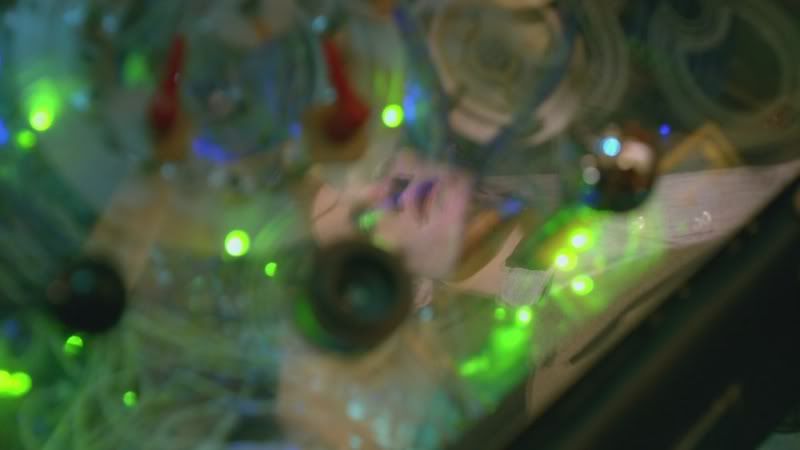
"There's only one person in the universe who hates me as much as you do."
But the Doctor, even at the end, as he looks into the reflection and still sees the Dream Lord, is still suffering a split in his duality. When he first sees the Dream Lord, he demands, "How did you get into my TARDIS?" In other words, he never accepts that the Dream Lord, his own beast nature, is always in his TARDIS. The beast and the hero are literally at war. The Dream Lord (the beast within the Doctor) is extremely hostile, critical, and is the only person that hates the Doctor to that extent. The beast, the Doctor's own self, hates his romantic, heroic nature. The hero hates his cruel, cold dark side. This duality persists because the Doctor has not found peace between his warring natures.
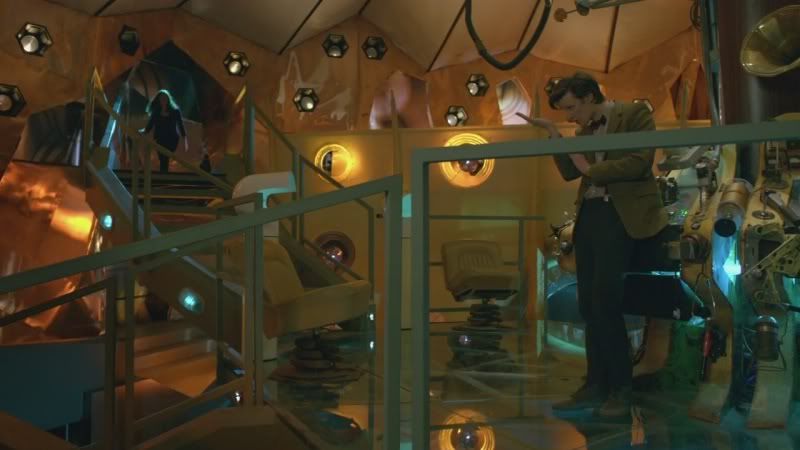
By the end of the episode, the dynamic between the three characters is starting to emerge. And by dynamic, I mean their archetypes and identities. Rory and Amy are the fairy tale heroes, the prince and princess, on an adventure. The Doctor is the old wise man, the guide, the trickster character, guiding them through adventure. He is the weird bow-tie-wearing alien working to hook up the prince and princess.
(to be continued...)